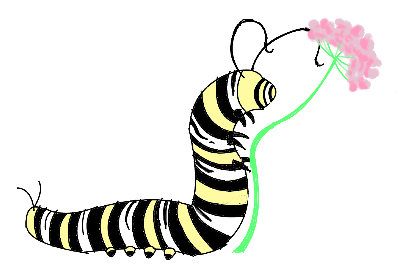Anoles, Quails, and Maybe Cattails

Raising Monarch Butterflies For Release
This page will be a guide for anyone interested in raising and releasing monarch butterflies.

Why Raise Monarchs?
Raising caterpillars into butterflies is a rewarding experience, perfect for people of all ages. Butterflies are a great way to teach young children about metamorphosis because they are interesting, fun to watch, and grow quickly. Raising butterflies is also a great way to help with conservation.

What You Will Need to Raise Monarch Caterpillars
- A Container
A good container should be around a foot squared for about five caterpillars. It should prevent the caterpillars from escaping and also provide adequate ventilation. You can find the plastic containers meant for raising feeder insects at a pet store or online, and those will work well if you are raising only a few. For more caterpillars, a mesh net container works well.
- A Spray Can/ Water Mister
Your caterpillars will need to drink. Misting the inside of the enclosure simulates dew on leaves in their natural habitat.
- Milkweed Leaves
Monarch caterpillars feed primaraly on milkweed leaves, so providing these is crucial. You can plant your own, or you can look for some on roadsides or in your yard. Be cautious with milkweed that may have been sprayed with chemicals, since these will hurt your caterpillars. The ones I have been collecting from my own road have been fine, but I always wash them before feeding and I am not sure if they spray on my road. If you are unsure, planting your own milkweed or getting some from a friend will be your safest choice. Remember that you will have to collect milkweed for the caterpillars almost daily, because like all babies, caterpillars are very hungry!
- Monarch Caterpillars
Once you have a good habitat set up and have plenty of milkweed to feed out, you are ready to get your caterpillars. There are a few ways to get monarchs, you can walk down your road and look for them on milkweed for free, but if you can't find any anywhere you can buy them online. Once there was even a person selling monarch butterfly starter kits- with caterpillars- at my local farmer's market. There is a controversy with buying caterpillars online, since they could have diseases or be mass produced, so if you do choose to buy caterpillars online do some reading on the suppliers.

Caring For Your Caterpillars
Monarch caterpillars are quite easy to care for, and the most important part of their care is removing withered leaves and caterpillar poop, or frass. Staying on top of food and water is crucial, because without it caterpillars sometimes try to build a chrysalis too early. Caterpillars grow quickly in five 'instars', or stages, and within a week or so they will change from a translucent worm into a huge one and a half inch long caterpillar. They will shed their skin frequently during this time, and when they are big enough (or when they stop eating- always make sure they have fresh milkweed) they will climb to the top of the enclosure and attatch their bottoms to the top surface with silk. From there, they will curl into a 'J' shape. The caterpillar will look greenish, and the filaments, or antennae, will begin to curl and look fragile. The caterpillars will shed their skin one last time to become a chrysalis.

The Monarch Chrysalis
When monarch caterpillars first develop their chrysalis, they will be a pale seafoam green color with gold specks near the top. As the days go by, the chrysalis will turn black and orange, and you will see the folded up wings of the monarch. A few days after that, the monarch butterfly will emerge from the chrysalis.

The New Butterflies
You will need to let your newly emerged butterflies rest. Their wings will look wrinkly, and they will have large abdomens. Both are normal, and all you need to do at this point is watch the butterflies pump the access fluid from their abdomens into their wings.
Once the new butterflies have fully dried their wings, it is time to release them.